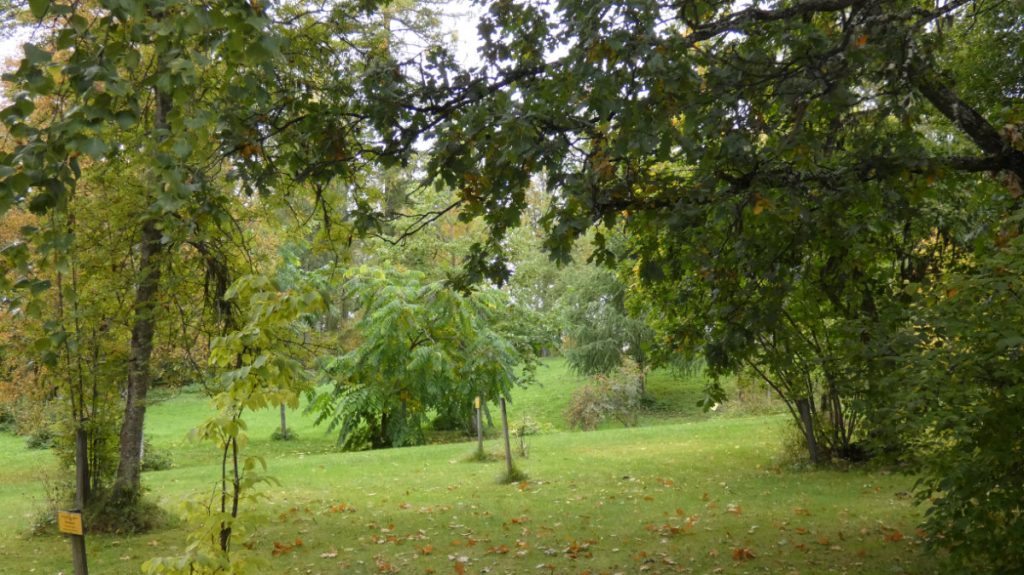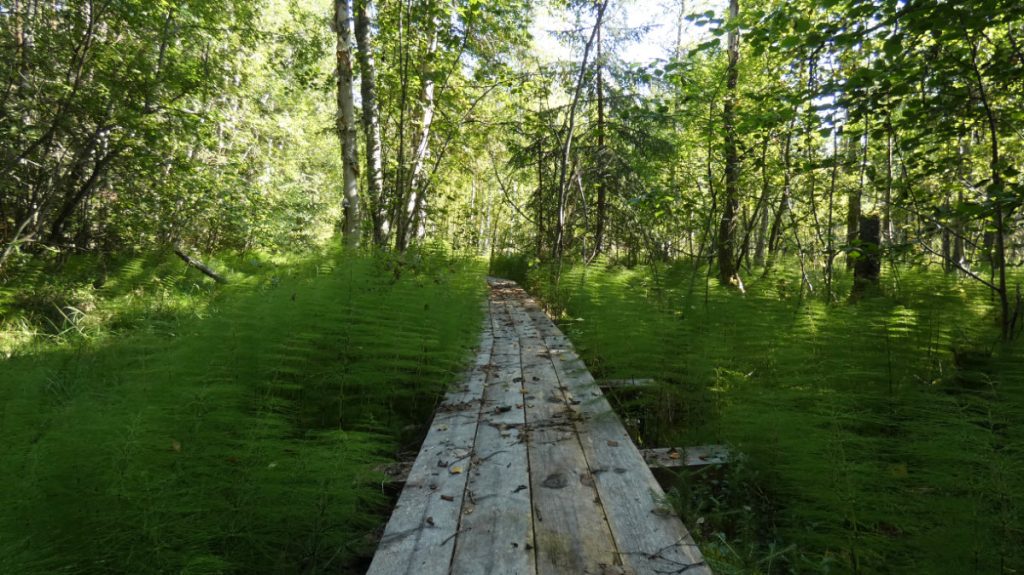Fors skogskyrkogård
Kettle hole
At this forest cemetery you can study a kettle hole that was created when the inland ice was melting roughly 10,000 years ago. It was formed when an ice block came loose and was embedded in the material that the melting ice had left behind. When the ice block melted, the hole was formed of the same size as the ice block had been.
Ice-free 10,000 years ago
About 20,000 years ago the thick inland ice covered the land that today is Sweden. In due course the ice melted. Geologists are not entirely certain but Ragunda was probably free from ice some 10,000 years ago. When the ice melted enormous masses of water rushed at full force through the landscape. The water carried along sand and gravel together with lighter material.

Blocks of ice formed kettle holes and kettle lakes
It happened that a block of ice came loose from the inland ice and was embedded in sand and gravel that the melting ice had left behind like here at Fors Skogskyrkogård. The material solidified around the block of ice and when the ice melted, the hole - kettle - was formed of the same size as the ice block had been.
There are dry and water-filled kettle holes. Water-filled kettle holes are called kettle lakes. In the area around Getryggen you can see both dry and water-filled kettle holes.

More information
Sites to visit on Theme Ice Age
More site photos



Places to visit nearby
Practicalities
Accessibility
See Accessibility.
Activities
Nothing special at the site. See instead Activities in Ragunda.
Eating and drinking
The nearest grocery store, café and eatery are in Bispgården. See also Eating and drinking in Ragunda.
Accommodation
Missing on site, but various options are available nearby. See Accommodation in Ragunda.
Getting here
SWEREF 99 TM N: 6 987 861 E: 583 234
WGS84 N: 63,010839° E: 16,643976°



